By Bill Bartholomew
Talk Host/Podcaster/Journalist/Musician
 Folks in the Gen Z and millennial demographics are heavily engaged in political issues, care about news in their communities and the world, and are constantly bombarded with content. So why are they less likely to tune into and interact with news/talk radio than older demographics?
Folks in the Gen Z and millennial demographics are heavily engaged in political issues, care about news in their communities and the world, and are constantly bombarded with content. So why are they less likely to tune into and interact with news/talk radio than older demographics?
Talk radio has historically skewed older, and from an ad portfolio standpoint, is often targeted at the coveted 35-54 and 55+ demographics. However, in a world where social media influencers and podcasters supply information to millions of young consumers, news/talk radio should be able to effectively compete for the ears of younger generations in a comparable, if not expanded way.
For all of the anecdotal and hard evidence that terrestrial radio may be trending in a downward direction, the format continues to have a vast reach. It is convenient to engage with it in automobiles, and occasionally in home or office settings. Yet, while younger generations listen to radio, news/talk is not the format that they turn to by and large.
Unlike many digital-first content producers, radio retains a unique quality: authority. By virtue of editorial standards, FCC regulation and brand – things that social media and podcasts often lack – radio has the unique ability to deliver credible, vetted, nuanced and universally trustworthy content that can instantaneously adapt to meet the needs of the moment. This is true in everything from natural disasters to rapidly evolving breaking news stories, providing a channel for immediate, reactionary insight and analysis.
There are several steps that news/talk radio should pursue in earnest to adapt to the current climate of content consumption, particularly by younger listeners, that can reach, and most importantly, retain broader, younger, more diverse and more engaged audiences.
- Introduce younger people into the conversation.
Too often, Gen Z and millennials are skewered by older hosts, mocked for their perceived naivety, unchecked optimism and me-first approach. While some of these qualities can be accurate, that approach reflects a disconnect between older generations and the experience of younger ones. Millennials and Gen Z have grown up in a post-9/11 world replete with “endless wars”, the fallout from the 2008 financial crisis, runaway student debt, a massive housing crisis, the mental health stressors of social media, Covid19’s impact on traditional youth experiences, climate change, a deeply bifurcated political environment and a constantly evolving quest for social justice. Through these experiences, younger generations offer an important perspective that should be assigned the same news value as experts from older generations.
Are you discussing shifts towards electric vehicles? Bring on someone from Gen Z to share their perspective on why steps towards carbon neutrality are important to them. Engaging a conversation on the president’s approval rating? Perhaps younger conservative and leftist voices should be included in the conversation. Discussing immigration? How about the perspective of a younger member of a Latino organization?
By giving younger generations and more diverse guests a platform, stations can simultaneously expand their content and reach. With consistency, the station’s brand will become more familiar to younger potential listeners who may be inclined to tune in to hear someone who shares their identity and perspective on – here’s that word again – a platform of authority. Let the guest do the work of establishing the credibility and importance of your station or talk show to younger audiences by posting about their appearance on social media, sharing audio clips and mentioning to their peers. It will build familiarity and trust among those generations, who in turn, will begin to tune in on a more regular basis.
Stations should also consider bringing more younger, competent voices into on-air roles, whether that be through reporting, segments, fill-in hosts, weekend shows or full-time hosts.
- Meet the audience where they are: their phones.
As mentioned above, the convenience of simply turning on AM/FM radio is highly appealing in automobiles, though as Apple Carplay continues to adapt and evolve, digital-first content is likely to become as simple and convenient in the near future.
Talk radio needs to make consuming their product on smartphones as simple and direct as turning on a traditional radio. This means no clunky websites, no lengthy pre-roll spots, a reliable stream connection and a “one touch” means of turning on and off the station. This should also mean expanding talk shows to high-quality video livestreams, following in the footsteps of the top YouTube and Twitch performers; developing unique content for TikTok and Instagram; building podcasts that are focused on specific issues, and; providing interaction via text and chat.
Radio has the ability to be the ultimate livestreamer, social media influencer and podcaster, but rarely harnesses these platforms in a meaningful way.
It is not enough to simply strive to “expand a digital presence”; stations and shows must engage in the hard work of building platform-specific content with their brands.
- Music, cultural references and themes for the modern age.
A few weeks ago on a seemingly benign episode of the TV show FOX NFL Sunday, panelists Jimmy Johnson and Terry Bradshaw offered an example of the type of cultural adaptation that sophisticated writers and producers provide their brands. While describing a fight between two football players, Mr. Johnson said something to the effect of “when it comes to these two, what’s that Taylor Swift song?”, and then in synch with Mr. Bradshaw, “bad blood!”. It is highly unlikely that these two 70+ men listen to Taylor Swift’s music with any regularity or would simultaneously pull the “Bad Blood” reference. Yet, with excellent preparation that played into the greater cultural moment as well as the specific, current Taylor Swift/NFL overlap, in a six-second span, FOX NFL Sunday was able to give the illusion that their panelists are contemporary, hip and plugged into “what is going on”. Is your station or show plugged into what’s going on? Do you use contemporary music for bumps? Are your images – including headshots and social content – modern, interesting and engaging or are they more akin to a miscellaneous real estate agent? You are a performer in an entertainment business that, while certainly paying homage to the past and lineage of the industry, must be contemporary in aural and visual presentation. This goes for everything from wardrobe on video and in photo to fonts on graphic design.
How often do you or your producer read Pitchfork to learn about new music that is breaking this week? How often do you or your producer read Variety to understand major trends that are happening in the broader entertainment industry? What live events are you broadcasting from, covering and building partnerships with? You should strive to be cutting edge.
- We need a friend now more than ever.
This is something that goes for all audiences, but particularly for younger ones. It’s OK, in fact, great to be yourself, present yourself from your generation and retain the authoritative stance that has built your brand. Take a look at the success that sports talker Mike Francesa enjoyed by leaning into his persona – and in turn – developing legions of younger listeners that fell in love with his dad-like delivery and frequent meltdowns.
Few things are as uncomfortable to see as a 40+ person dressing or acting like a teenager. Younger listeners want that senior, experienced, trusted friend to entertain them, inform them, and at times, tell them that everything is going to be OK. You can help make sense of the world for younger audiences, something that is absolutely essential in the modern era.
Through attracting younger listeners by including them in the conversation, effectively delivering content on smartphones, presenting a cutting-edge entertainment product and continuing to serve as a trusted friend, news/talk radio can greatly expand its reach, relevance and revenue.
To that point, some younger listeners who discover a radio station or show via any of the above entry points will likely work backwards to the traditional AM/FM dial. Like the resurgence of vinyl records, AM radio in particular has the opportunity to become a hip delivery format for discerning younger listeners.
The big question is: are radio companies, stations and hosts prepared to do the hard work of reimaging their product?
Share this with your network
 MARU/Matchbox was hired to conduct an in-depth study of 603 weekly podcast consumers from April 19-24 of this year. Takeaways include: 1) YouTube is used most among Podcast Newcomers, Podcast Pioneers, and heavy podcast consumers; 2) YouTube podcast audience profile: Male and younger than the Apple Podcasts audience; 3) As the world’s entertainment search engine, YouTube is the dominant podcast discovery platform where audiences are more likely to find podcasts; and 4) Those who discover a podcast on YouTube say they stick with the platform for video, comments, community, entertainment, recommendations, and platform features. This growth for YouTube comes at the expense of Apple Podcasts. In July of 2019, Apple Podcasts was the most-used platform for 29% of weekly podcast consumers with 15% for YouTube. Five years later the figures are nearly reversed with 31% of weekly podcast consumers preferring YouTube and just 12% reporting Apple Podcasts as their most-used platform. See the full blog here.
MARU/Matchbox was hired to conduct an in-depth study of 603 weekly podcast consumers from April 19-24 of this year. Takeaways include: 1) YouTube is used most among Podcast Newcomers, Podcast Pioneers, and heavy podcast consumers; 2) YouTube podcast audience profile: Male and younger than the Apple Podcasts audience; 3) As the world’s entertainment search engine, YouTube is the dominant podcast discovery platform where audiences are more likely to find podcasts; and 4) Those who discover a podcast on YouTube say they stick with the platform for video, comments, community, entertainment, recommendations, and platform features. This growth for YouTube comes at the expense of Apple Podcasts. In July of 2019, Apple Podcasts was the most-used platform for 29% of weekly podcast consumers with 15% for YouTube. Five years later the figures are nearly reversed with 31% of weekly podcast consumers preferring YouTube and just 12% reporting Apple Podcasts as their most-used platform. See the full blog here.


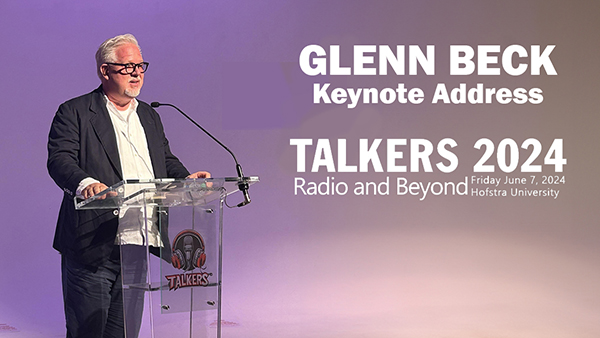
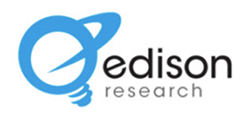 watching video podcasts. Sixty-two percent of weekly podcast listeners 13+ have enjoyed video podcasts passively, with the video content playing in the background while listening to the audio. Meanwhile, the data reveals a compelling point – 72% of weekly podcast listeners 13+ have enjoyed video podcasts actively, meaning they have watched video as they listen to the podcast. Edison says, “Podcasts with video elements also allow creators to repurpose content into short, engaging clips tailor-made for social media platforms – think YouTube shorts, TikTok, or reels on Instagram or Facebook. This strategy can work to enhance a show’s digital presence, while amplifying the reach and engagement of podcasts overall.”
watching video podcasts. Sixty-two percent of weekly podcast listeners 13+ have enjoyed video podcasts passively, with the video content playing in the background while listening to the audio. Meanwhile, the data reveals a compelling point – 72% of weekly podcast listeners 13+ have enjoyed video podcasts actively, meaning they have watched video as they listen to the podcast. Edison says, “Podcasts with video elements also allow creators to repurpose content into short, engaging clips tailor-made for social media platforms – think YouTube shorts, TikTok, or reels on Instagram or Facebook. This strategy can work to enhance a show’s digital presence, while amplifying the reach and engagement of podcasts overall.”

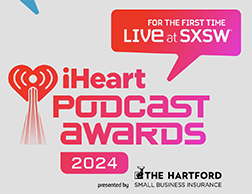 last night (3/11). The event was also exclusively video streamed on iHeartRadio’s YouTube channel and broadcast across iHeartMedia radio stations nationwide and on the iHeartRadio app. Winners were named in 32 categories, including Podcast of the Year, which went to “New Heights.” Entertainer Lilly Singh presented the award to co-hosts Jason Kelce and Travis Kelce, who accepted the honor via video.
last night (3/11). The event was also exclusively video streamed on iHeartRadio’s YouTube channel and broadcast across iHeartMedia radio stations nationwide and on the iHeartRadio app. Winners were named in 32 categories, including Podcast of the Year, which went to “New Heights.” Entertainer Lilly Singh presented the award to co-hosts Jason Kelce and Travis Kelce, who accepted the honor via video. 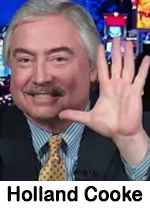 Sell a local advertiser a promotion – a contest which awards a major prize from the advertiser’s inventory – to the winner who creates the best commercial for the advertiser.
Sell a local advertiser a promotion – a contest which awards a major prize from the advertiser’s inventory – to the winner who creates the best commercial for the advertiser.
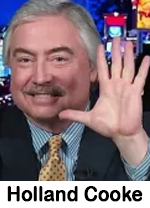 If you’re a news/talk station, don’t assume that you own “news radio” in your market. Imaging is important, but it merely talks-the-talk. You walk-the-walk with local news copy that delivers what solid commercial copy does: benefits. Just doing local news makes you special. But do listeners simply hear a station voice… reading something? Are you merely… accurate? Or do you deliver “take-home pay,” unwrapping the story to tell the listener something useful?
If you’re a news/talk station, don’t assume that you own “news radio” in your market. Imaging is important, but it merely talks-the-talk. You walk-the-walk with local news copy that delivers what solid commercial copy does: benefits. Just doing local news makes you special. But do listeners simply hear a station voice… reading something? Are you merely… accurate? Or do you deliver “take-home pay,” unwrapping the story to tell the listener something useful?
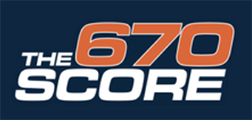 should keep quarterback Justin Fields or trade him in the upcoming draft for the #1 pick. Parkins and Spiegel will kick off the discussion from Audacy Chicago’s Blue Cross Blue Shield Performance Stage from 2:00 pm to 6:00 pm. Football experts and a live audience will join Parkins and Spiegel to weigh in on the looming decision. “The Score” ran a contest this week for a chance to attend the “QB1 Town Hall.” These winners will make up the crowd that will have the opportunity take part in the debate. WSCR VP of programming Mitch Rosen says, “This decision will determine the entire season’s trajectory and the fans are passionate about their views on it. We’re looking forward to opening up this conversation to our listeners and Bears faithful.” The show is being made available via the Audacy app & website, the station’s Twitch, and YouTube channels.
should keep quarterback Justin Fields or trade him in the upcoming draft for the #1 pick. Parkins and Spiegel will kick off the discussion from Audacy Chicago’s Blue Cross Blue Shield Performance Stage from 2:00 pm to 6:00 pm. Football experts and a live audience will join Parkins and Spiegel to weigh in on the looming decision. “The Score” ran a contest this week for a chance to attend the “QB1 Town Hall.” These winners will make up the crowd that will have the opportunity take part in the debate. WSCR VP of programming Mitch Rosen says, “This decision will determine the entire season’s trajectory and the fans are passionate about their views on it. We’re looking forward to opening up this conversation to our listeners and Bears faithful.” The show is being made available via the Audacy app & website, the station’s Twitch, and YouTube channels.  to connect with their favorite hosts and shows on social media. Half of weekly podcasts consumers follow their favorite podcast hosts on one of the social platforms; 2) Younger 18-34 podcast consumers are more likely to follow their favorite hosts on social media. Compared to 35-49 and 50+ podcast consumers, 18-45 podcast consumers are more engaged socially with podcast hosts. 68% of podcast consumers 18-34 follow their favorite hosts on social media. 55% of 35-49s follow favorite hosts on social. 40% of those 50+ follow favorite podcast hosts on social; and 3) YouTube towers as a podcast discovery platform: 19% of weekly podcast consumers use YouTube to find podcasts. When asked which social platform they’ve used to find podcasts, 19% of podcast consumers are turning to YouTube, more than all other social media platforms combined.
to connect with their favorite hosts and shows on social media. Half of weekly podcasts consumers follow their favorite podcast hosts on one of the social platforms; 2) Younger 18-34 podcast consumers are more likely to follow their favorite hosts on social media. Compared to 35-49 and 50+ podcast consumers, 18-45 podcast consumers are more engaged socially with podcast hosts. 68% of podcast consumers 18-34 follow their favorite hosts on social media. 55% of 35-49s follow favorite hosts on social. 40% of those 50+ follow favorite podcast hosts on social; and 3) YouTube towers as a podcast discovery platform: 19% of weekly podcast consumers use YouTube to find podcasts. When asked which social platform they’ve used to find podcasts, 19% of podcast consumers are turning to YouTube, more than all other social media platforms combined. 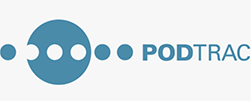 while traditional podcast metrics and rankers have focused on the RSS distribution of podcasts, Podtrac’s new Global ranking also includes the viewership of podcasts on YouTube – another industry first.” The company adds, “By encompassing YouTube viewership alongside traditional metrics, the industry gains an improved framework for capturing podcast engagement across platforms and borders. It provides advertisers, agencies, and industry stakeholders with the reach and influence of the key podcast players.”
while traditional podcast metrics and rankers have focused on the RSS distribution of podcasts, Podtrac’s new Global ranking also includes the viewership of podcasts on YouTube – another industry first.” The company adds, “By encompassing YouTube viewership alongside traditional metrics, the industry gains an improved framework for capturing podcast engagement across platforms and borders. It provides advertisers, agencies, and industry stakeholders with the reach and influence of the key podcast players.”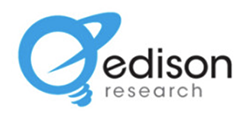 largest share of listening, accounting for more than one-third of daily time with audio among those age 13+. The vast majority of that listening (31%) is to AM/FM over-the-air signals.” (The other 5% comes from radio streams.) Behind AM/FM in listening is streaming music (20%), YouTube (14%), podcasts (11%), SiriusXM (8%), owned music (4%), TV music channels (3%), audiobooks (3%) and other (1%).
largest share of listening, accounting for more than one-third of daily time with audio among those age 13+. The vast majority of that listening (31%) is to AM/FM over-the-air signals.” (The other 5% comes from radio streams.) Behind AM/FM in listening is streaming music (20%), YouTube (14%), podcasts (11%), SiriusXM (8%), owned music (4%), TV music channels (3%), audiobooks (3%) and other (1%). 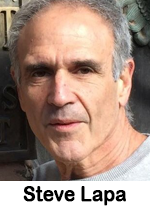 Let’s talk streaming because I don’t get what is happening. Maybe you do.
Let’s talk streaming because I don’t get what is happening. Maybe you do. If you’ve been seeing CES coverage on network and cable newscasts this week, you’ve heard it called “the Consumer Electronics Show,” despite we-the-media being told not to. They want us to say “CES,” although, years ago, the Consumer Electronics Association changed its name to the Consumer Technology Association, not its first rebrand.
If you’ve been seeing CES coverage on network and cable newscasts this week, you’ve heard it called “the Consumer Electronics Show,” despite we-the-media being told not to. They want us to say “CES,” although, years ago, the Consumer Electronics Association changed its name to the Consumer Technology Association, not its first rebrand.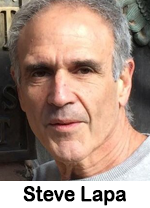 How many times will we research the same subject and come to the same conclusion?
How many times will we research the same subject and come to the same conclusion?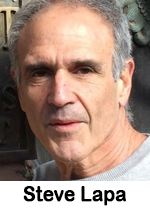 It happens to everyone at least once.
It happens to everyone at least once.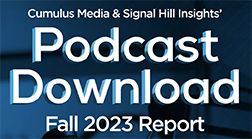 2) Audio is powerful. Podcast consumers spend a significant amount of time on YouTube listening to podcasts without watching the video; 3) Since 2019, YouTube and
2) Audio is powerful. Podcast consumers spend a significant amount of time on YouTube listening to podcasts without watching the video; 3) Since 2019, YouTube and  video saying it violates its community guidelines that “prohibit linking to content containing manifestos from individuals who have committed violent attacks.” Crowder issued a notice on X regarding the removal of the content, saying, “YOU determine what matters. YOU determine the content. Not YouTube, not the rest of BigTech, not their lackies, and not a gaggle of sponsors who don’t have the b***s to stand behind the kind of content you actually want to see.” According to a report by Newsweek, “The Metro Nashville Police Department has not confirmed that the screenshots shared by Crowder are Hale’s manifesto. A department spokesperson told Newsweek Monday that police were ‘unable to confirm the authenticity of what has been released, although we are looking into that at this very moment.’”
video saying it violates its community guidelines that “prohibit linking to content containing manifestos from individuals who have committed violent attacks.” Crowder issued a notice on X regarding the removal of the content, saying, “YOU determine what matters. YOU determine the content. Not YouTube, not the rest of BigTech, not their lackies, and not a gaggle of sponsors who don’t have the b***s to stand behind the kind of content you actually want to see.” According to a report by Newsweek, “The Metro Nashville Police Department has not confirmed that the screenshots shared by Crowder are Hale’s manifesto. A department spokesperson told Newsweek Monday that police were ‘unable to confirm the authenticity of what has been released, although we are looking into that at this very moment.’”  Folks in the Gen Z and millennial demographics are heavily
Folks in the Gen Z and millennial demographics are heavily 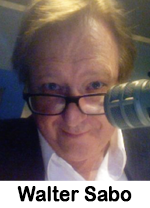 In May 2007, I was enjoying the brand-new app called YouTube. Still independently owned, still relatively unknown. Some of the videos pulled millions of viewers, more viewers than enjoyed by ESPN or any cable network. More interesting, the videos with high counts were not made by NBC or ESPN or any traditional video source. High view count videos were being made by people with no experience in traditional media, they were experimenters producing in their basements and bedrooms.
In May 2007, I was enjoying the brand-new app called YouTube. Still independently owned, still relatively unknown. Some of the videos pulled millions of viewers, more viewers than enjoyed by ESPN or any cable network. More interesting, the videos with high counts were not made by NBC or ESPN or any traditional video source. High view count videos were being made by people with no experience in traditional media, they were experimenters producing in their basements and bedrooms.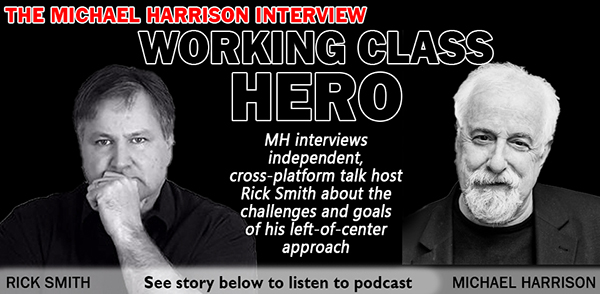
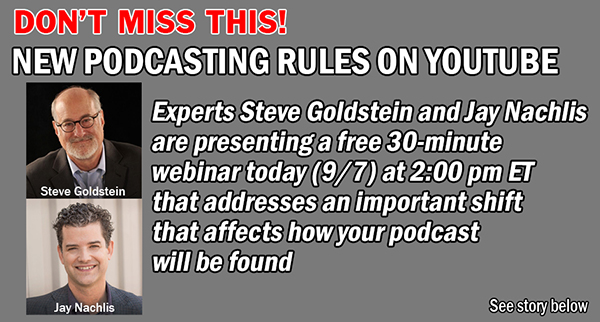
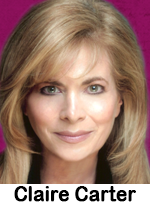 society alike to learn from the mistakes made before, during and after the tragedy so as to prevent such an atrocity from happening again. Carter tells TALKERS, “On the Sunday after 9/11, I listened to a sermon titled, ‘Making Sense of the Senseless.’ Its overriding message was: We cannot allow all these people to have died in vain. We need to do good in their name. And so to honor and remember all those who died, all those who survived, all those involved in the rescue and recovery efforts, as well as all those whose lives will never be the same, I have written and recorded a moving, memorable and thought-provoking piece, ‘Never Again Should There Be a 9/11,’ with the music, ‘Help is on the Way’ composed and performed by composer, David Friedman. It is all the more compelling when you watch the video on YouTube.” Carter adds, “We came together then. Can we come together again for the sake of the well-being of our nation and world. And what will it take to prevent such a horrific act from happening again? Thank you for caring and getting the vocals, the music and the video to as many people as possible around the world – including government officials who need to ensure our safety and security.”
society alike to learn from the mistakes made before, during and after the tragedy so as to prevent such an atrocity from happening again. Carter tells TALKERS, “On the Sunday after 9/11, I listened to a sermon titled, ‘Making Sense of the Senseless.’ Its overriding message was: We cannot allow all these people to have died in vain. We need to do good in their name. And so to honor and remember all those who died, all those who survived, all those involved in the rescue and recovery efforts, as well as all those whose lives will never be the same, I have written and recorded a moving, memorable and thought-provoking piece, ‘Never Again Should There Be a 9/11,’ with the music, ‘Help is on the Way’ composed and performed by composer, David Friedman. It is all the more compelling when you watch the video on YouTube.” Carter adds, “We came together then. Can we come together again for the sake of the well-being of our nation and world. And what will it take to prevent such a horrific act from happening again? Thank you for caring and getting the vocals, the music and the video to as many people as possible around the world – including government officials who need to ensure our safety and security.” 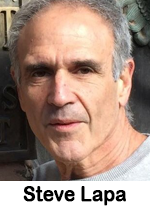 Bulletin: “Linear TV” is no longer the winner.
Bulletin: “Linear TV” is no longer the winner.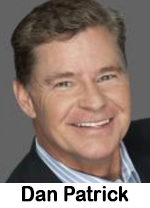 he plans to retire from the business in four years at the end of 2027. Patrick’s radio program is nationally syndicated via Premiere Networks and is simulcast via YouTube. The former ESPN personality responded to fans who questioned his decision by saying, “This is a young man’s game. I’m the oldest guy doing this. And I enjoy doing it, but by the end of 2027, that’ll be it. You have my word, so plan accordingly.”
he plans to retire from the business in four years at the end of 2027. Patrick’s radio program is nationally syndicated via Premiere Networks and is simulcast via YouTube. The former ESPN personality responded to fans who questioned his decision by saying, “This is a young man’s game. I’m the oldest guy doing this. And I enjoy doing it, but by the end of 2027, that’ll be it. You have my word, so plan accordingly.”